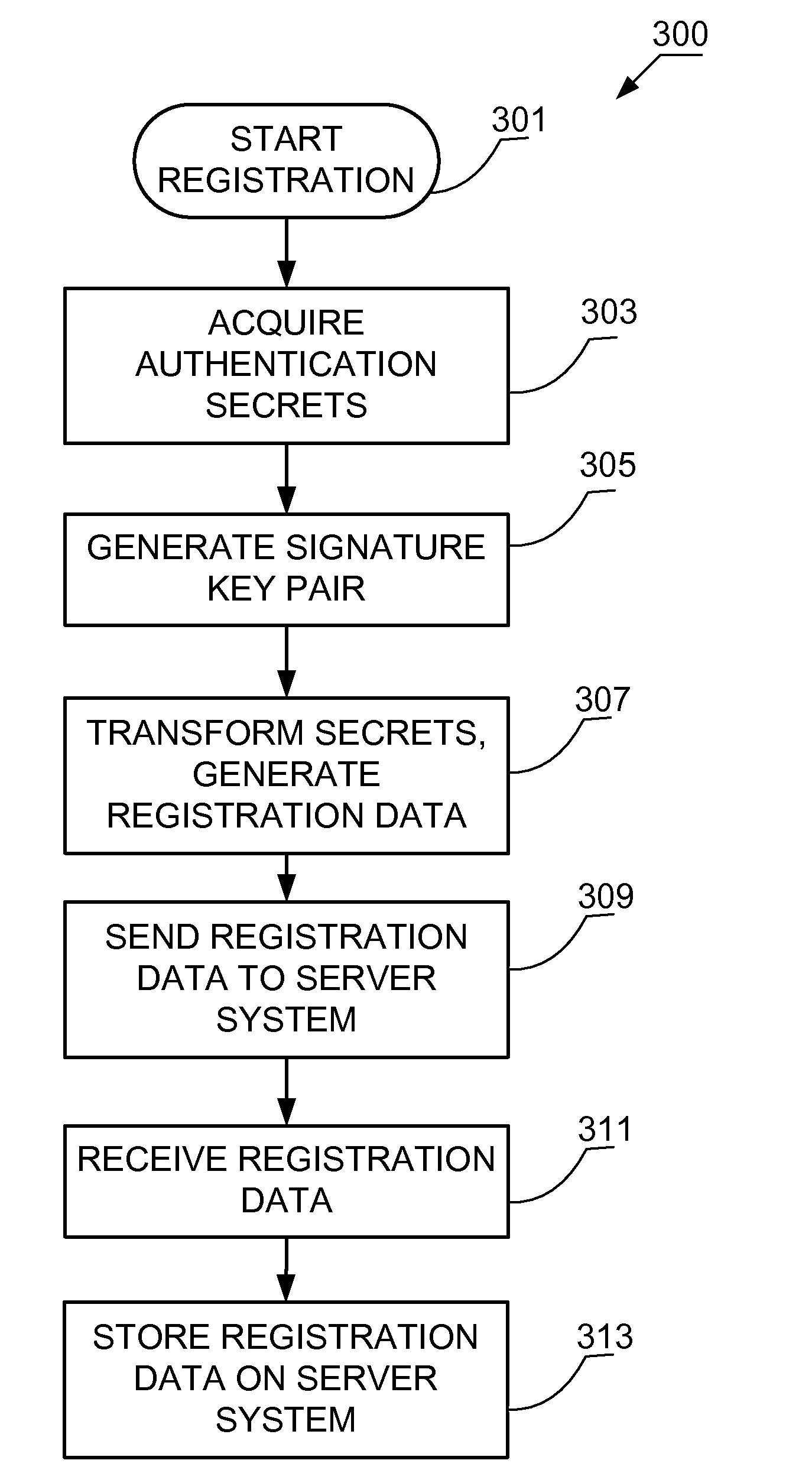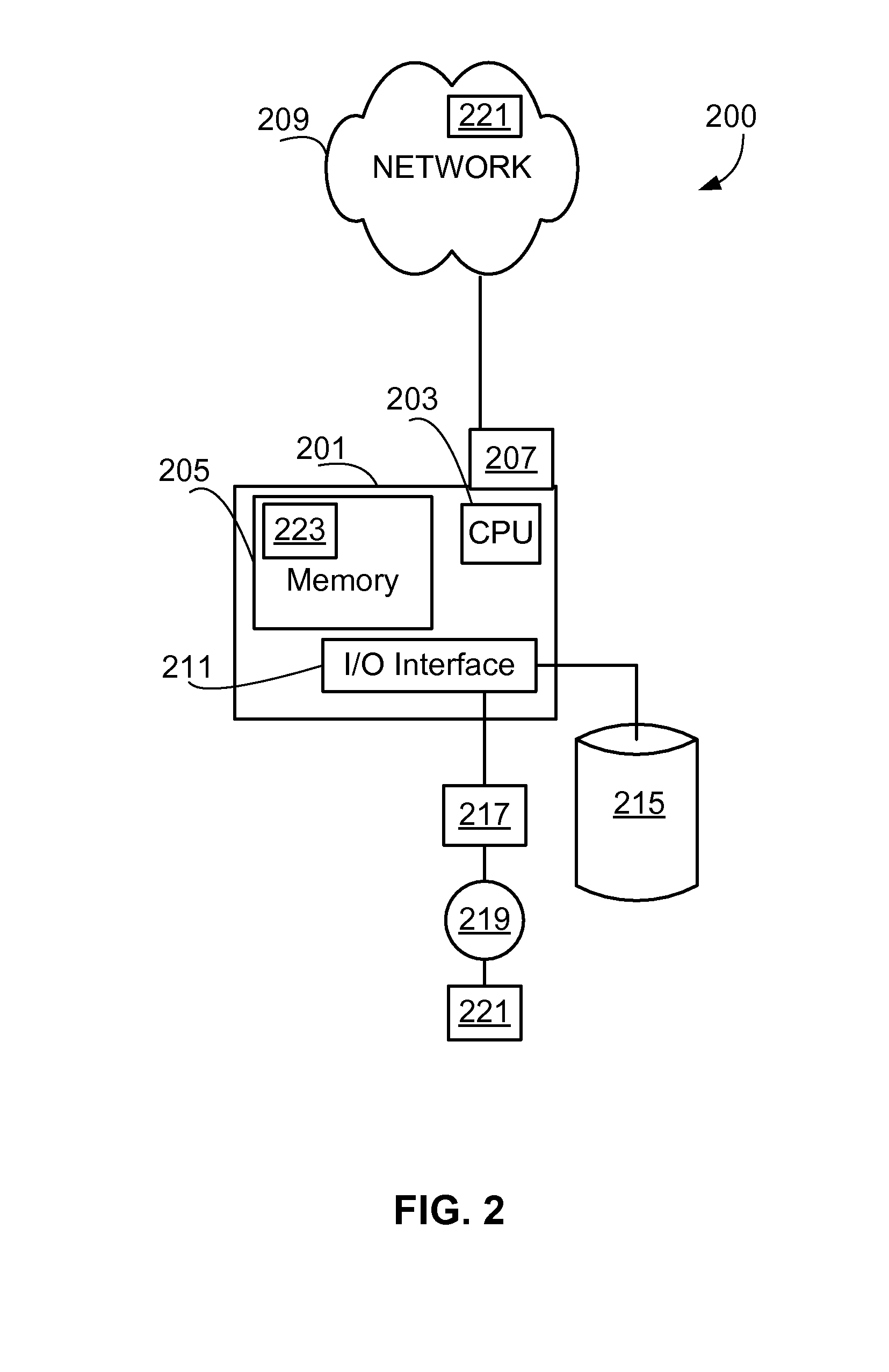Multi-factor password-authenticated key exchange
a multi-factor authentication and key exchange technology, applied in digital transmission, wireless communication, instruments, etc., can solve problems such as public skepticism, phishing and spyware, and many users' computers being compromised with spywar
- Summary
- Abstract
- Description
- Claims
- Application Information
AI Technical Summary
Problems solved by technology
Method used
Image
Examples
Embodiment Construction
[0029]The technology disclosed herein teaches methods, apparatus, and program products that enable a first computer and a second computer to mutually authenticate each other over a network. A first computer sends first authentication evidence to a second computer. The first authentication evidence is used to prove to the second computer that the first computer has access to a first plurality of authentication secrets without exposing the first plurality of authentication secrets. In addition, the second computer sends second authentication evidence to the first computer. The second authentication evidence is used to prove to the first computer that the second computer has access to a second plurality of authentication secrets without exposing the second plurality of authentication secrets. The first plurality of authentication secrets is related to the second plurality of authentication secrets. Thus, the first computer is authenticated to the second computer and the second computer...
PUM
 Login to View More
Login to View More Abstract
Description
Claims
Application Information
 Login to View More
Login to View More - R&D
- Intellectual Property
- Life Sciences
- Materials
- Tech Scout
- Unparalleled Data Quality
- Higher Quality Content
- 60% Fewer Hallucinations
Browse by: Latest US Patents, China's latest patents, Technical Efficacy Thesaurus, Application Domain, Technology Topic, Popular Technical Reports.
© 2025 PatSnap. All rights reserved.Legal|Privacy policy|Modern Slavery Act Transparency Statement|Sitemap|About US| Contact US: help@patsnap.com



